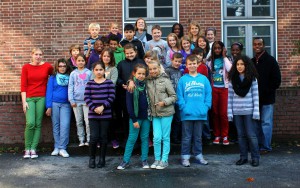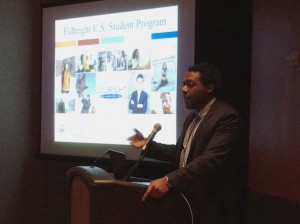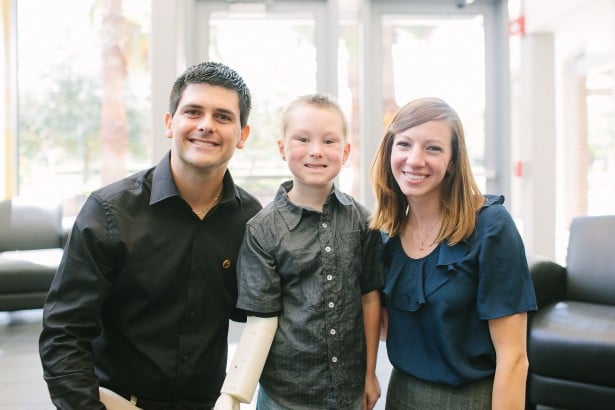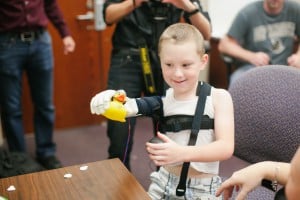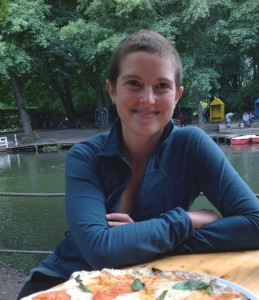
Larena Nellies-Ortiz, 2013-2014, Fulbright English Teaching Assistant to Germany (right, in blue jacket), with a group of her sixth grade students on an excursion in Spandau, Berlin
On my last day as a Fulbright English Language Teaching Assistant (ETA) at the Paul Moor Elementary School in Berlin, Germany, the fifth and sixth grade classes shyly presented me with a colorful booklet. It was filled with students’ most memorable moments in my English class. Some wrote about the time they tried salty seaweed and chili sprinkled mango, and were charged with the task of guessing what they were called. Others remembered researching and leading a sightseeing tour through their neighborhood. During these activities, I noticed students who had shown little participation during regular class time were now fully engaged, attentive and willing to try their English in a new setting. As an ETA, I had the freedom to create engaging material that would resonate with students. Of course, I got my fair share of blank stares, as any teacher would have, but those moments were heavily outweighed by the countless times students stepped out of their comfort zone and into the possibility of genuine learning and exchange.
After school hours, I continued to teach, but in a different setting and language. I joined a group of dedicated volunteers to teach German to refugees through Multitude e.V., an organization that provides German language classes to refugees across Berlin. Drop-in evening lessons took place at the public housing where refugees lived, and on any given day, topics ranged from basic literacy skills, to practical tips on everyday life in Germany. My students and I found common ground in our shared experiences of navigating a society and culture different from our own. Participating in the Fulbright ETA Program gave me an opportunity to help create a foundation for cultural exchange and mutual understanding by integrating into the community and contributing my skills in a meaningful way. The stories and connections I shared with students were vital to revealing how our differences in origin, language and culture were a tool, rather than a barrier, to achieving our language learning goals.


